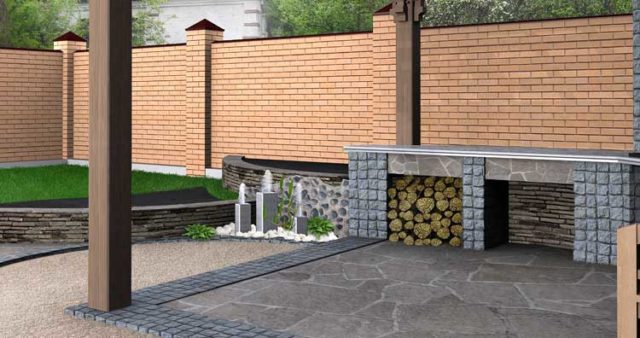In last month’s blog, we focused on outdoor living spaces and examined options for creating your ideal deck. This month’s blog continues the outdoor living spaces series and looks at building the ultimate patio. We provide a review of the materials you can use for creating your outdoor patio space.
If you have chosen a patio as your outdoor oasis, there are many directions that you can go in with the design of this space. Make sure to consider these key principles in the design of the patio, including:
- Purpose: How do you want to use the patio? Entertaining? Gardening? Relaxing or hide-away?
- Budget: How much can you reasonably spend?
- Location and Weather: How much privacy and space do you have for the patio? What type of climate and weather conditions do you experience?
- Style: What is your home style? How can you complement your existing home and landscape with your patio?
- Add-Ons: What additional components do you want to include – Fire pit? Cooking area? Hot tub? Screens and cage?
Once you have evaluated all of the considerations listed above and landed on your patio design, it’s time to think of the different materials available for your patio.
Let’s review the advantages and disadvantages of the more popular patio materials:
| Material | Advantages | Disadvantages |
| Mulch: Mulch is a more natural and simplistic option for an outdoor patio space. There are a variety of natural and synthetic mulches available. |
|
|
| Gravel or River Stone: Like mulch, gravel or small stone can provide you with a natural look for your patio area. |
|
|
| Concrete: Concrete has become a popular choice for patios, especially with the ability to do “concrete stamping”; concrete stamping is a process of adding patterns and texture to resemble other popular patio surfaces. |
|
|
| Brick or Pavers: Brick or pavers can add a lot of style to your patio. There are many sizes and colors that can be used with pavers to create decorative patterns. |
|
|
| Natural Stone: There’s a wide range of natural stone that you can use for your patio, including granite, marble, sandstone, limestone and bluestone. |
|
|
Your patio choices are a unique expression of you and your home. Before embarking on this endeavor, it pays to do your research. Once you have built a foundation for your patio, think about the ways you can enhance this living space with options like lighting, sound, plants, decorative items, and furniture.
If you would like to build your outdoor oasis patio but not sure know where to get started, contact one of the design specialists at Prominent Builders and Design. We can assist you through the entire process from concept to design to reality.

